Common garden design mistakes you don't want to make
Steer clear of these backyard fails
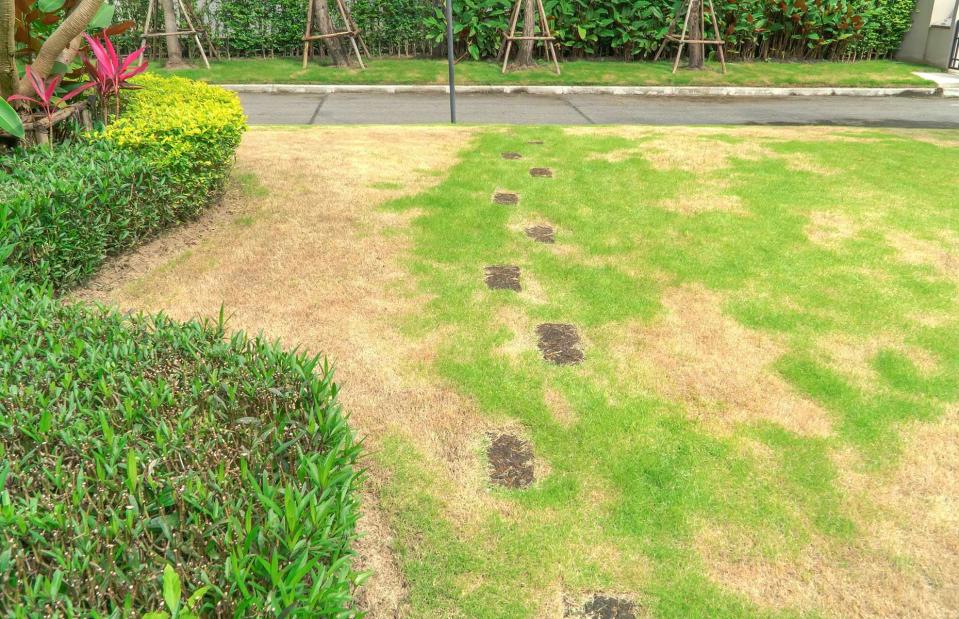
SingjaiStocker / Shutterstock
A gorgeous garden makeover can increase your home's value and create an awesome alfresco living space for your family to enjoy. But without proper planning and execution, your outdoor project could soon turn into a backyard fail, not to mention a waste of money.
From dead turf to defective decking, discover the most common garden design mistakes and how to avoid them, starting with the planning stages...
Not starting with a plan
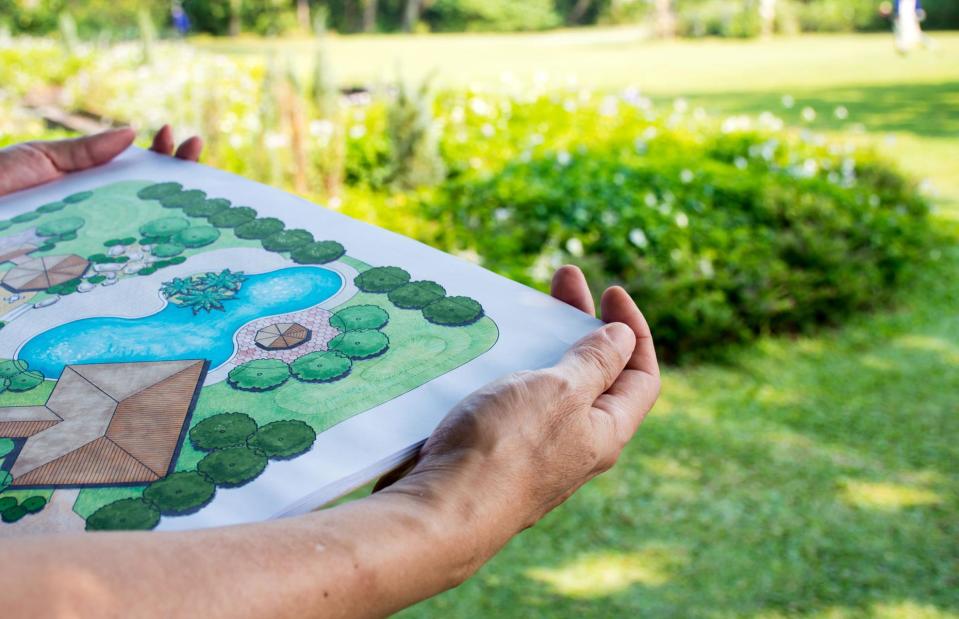
p-jitti / Shutterstock
If you don't consider the size, shape and orientation of your garden, you won't maximise its potential. Before you begin, take time to consider what you want to use your outside space for. A beautiful patio or terrace full of delicate flowers overlooking a large pond and greenhouse won't last long if you have children who like to kick a ball around.
With careful planning, you can create the right zones for your family's needs; enlist a garden designer, make use of free online tools or simply sketch out your ideas.
Not paying attention to the sun’s path
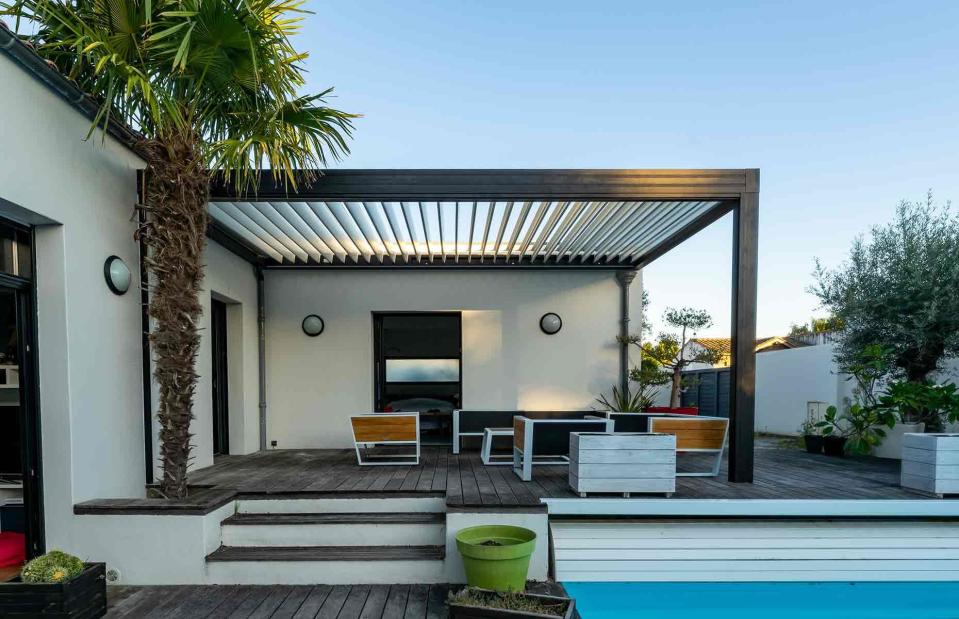
MATHILDE.LR / Shutterstock
If you have visions of kicking back in your garden in the summer months and soaking up the sun, it's vital that you consider where the light falls in your outdoor space. Over a day, study the path of the sun and identify which areas of your backyard receive the most sunlight and which are shaded, then plan your garden zones accordingly.
If you fail to do your research before you settle on a design, you might find your sun trap perpetually stuck in the shadows.
Not having a sense of adventure
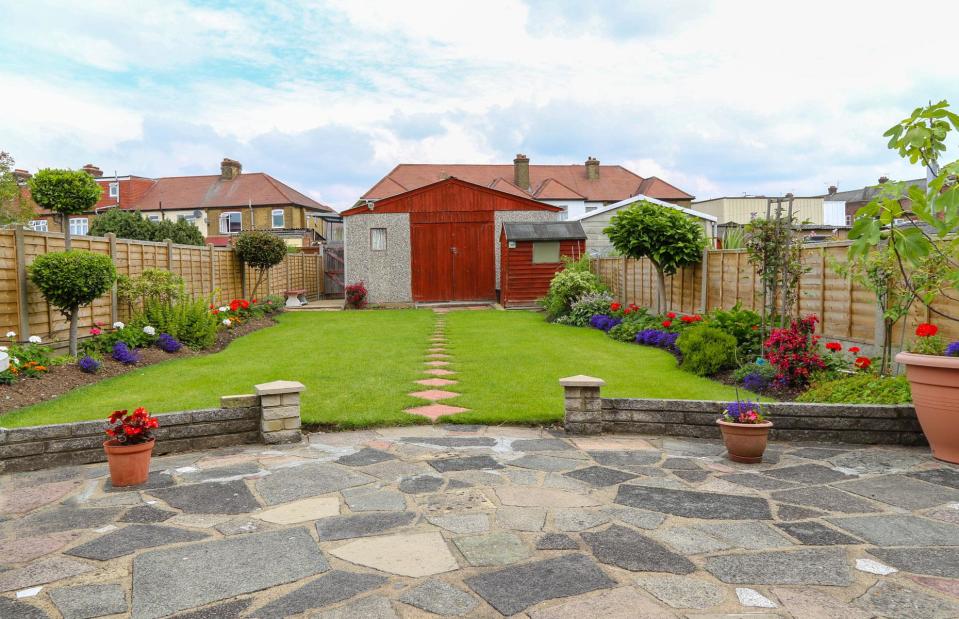
jean.cuomo / Shutterstock
A garden that is neglected and unloved can seriously impact a property's value. Look to the latest garden trends for inspiration to make your outside space stand out. Rather than playing it safe with a patch of grass and a few concrete slabs, create centrepieces that draw the eye, introduce levels and zone areas with creative dividers.
Thinking inside the box
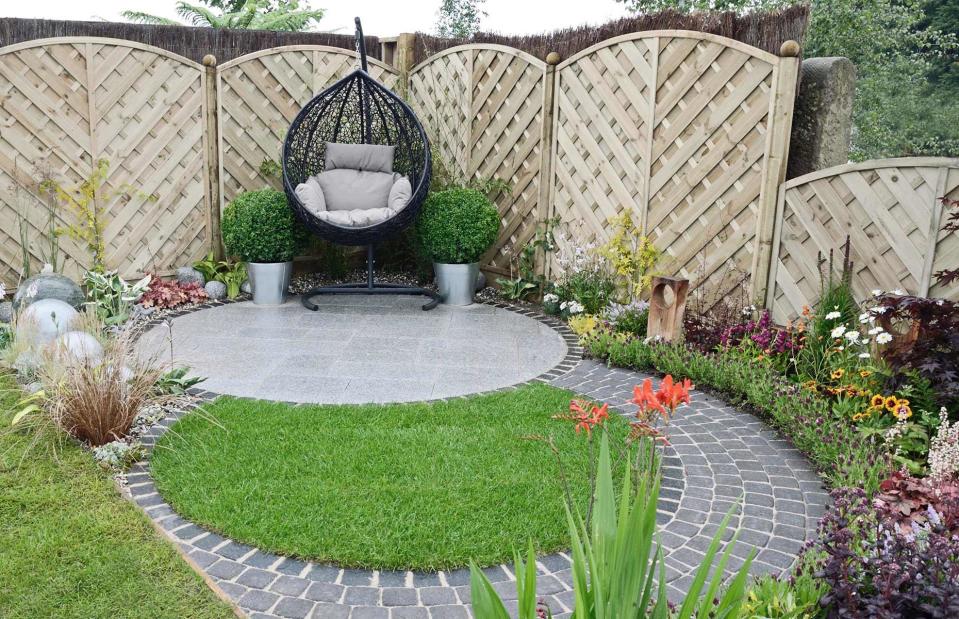
Gardens by Design / Shutterstock
A classic mistake, particularly if you're tight on space, is designing your garden in traditional boxes and right angles, which often make it feel rigidly confined. Instead, opt for curves, which can help with the overall flow of the layout. Try arched pathways, rounded borders, or even circular flowerbeds to soften those harsh edges that often make small gardens look severe and formal.
Forgetting to consider the flow
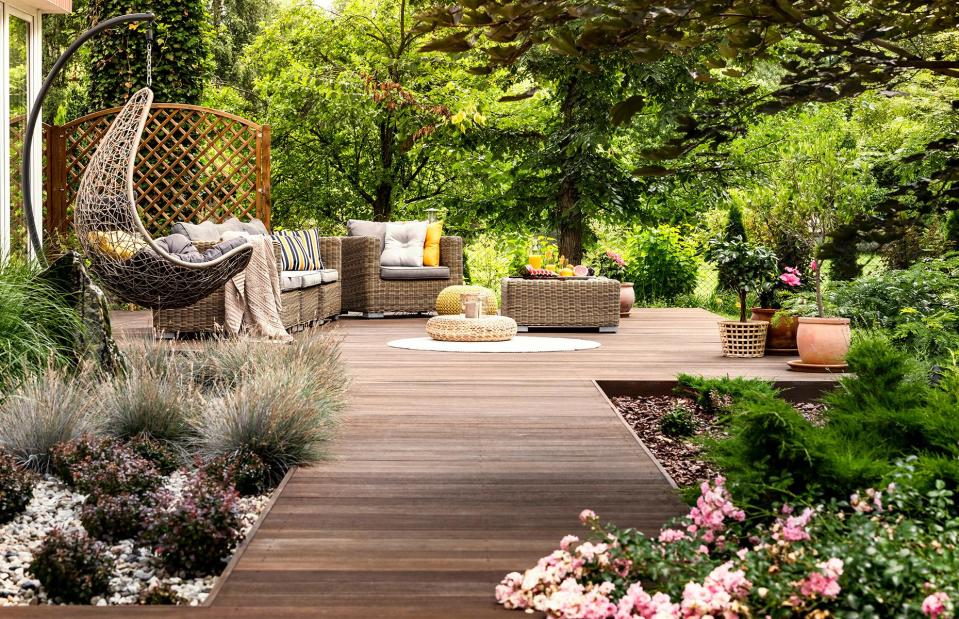
Ground Picture / Shutterstock
A common mistake when planning your garden project is forgetting to consider how your garden will flow. Thinking your property and your garden are two separate spaces will only lead to a disjointed feel.
A homey country cottage would look ridiculous with a contemporary garden with right angles and hard landscaping, whereas a sleek modern townhouse would not suit a wild meadow. Choose a garden that will complement your property to blur the line between indoors and outdoors.
Squeezing too much in
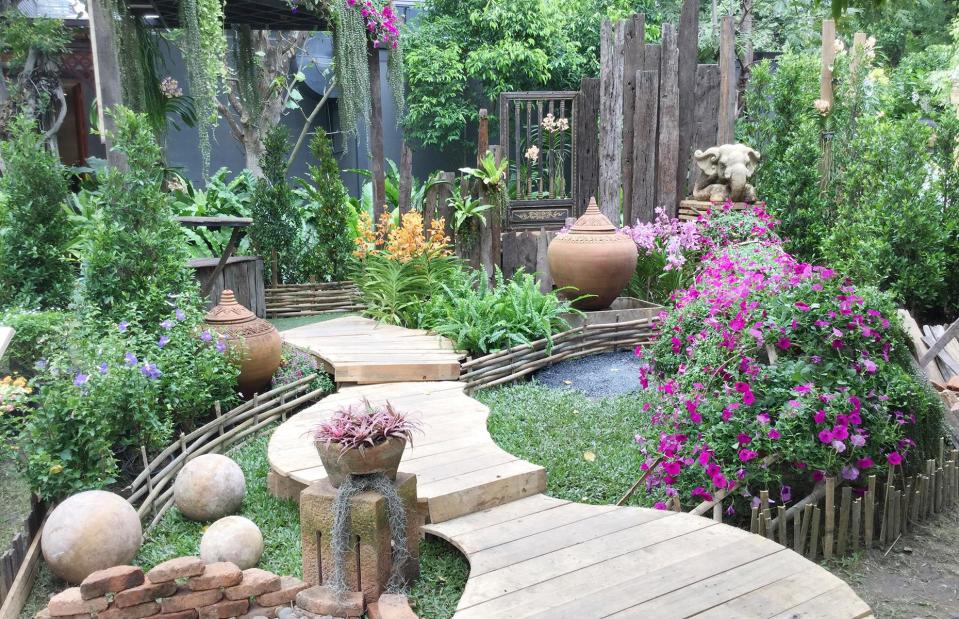
Moolkum / Shutterstock
Cramming too much into your garden is a common mistake to make. If in doubt, embrace the less-is-more ethos and only install large features if you have plenty of room. This space has a lot packed in but the use of different levels creates flow between pockets of interest and pared-back natural materials make way for shapes and textures.
Once you've got to know your space and have put together a wishlist of elements, you can start planning your hard landscaping...
Putting your patio in the wrong place
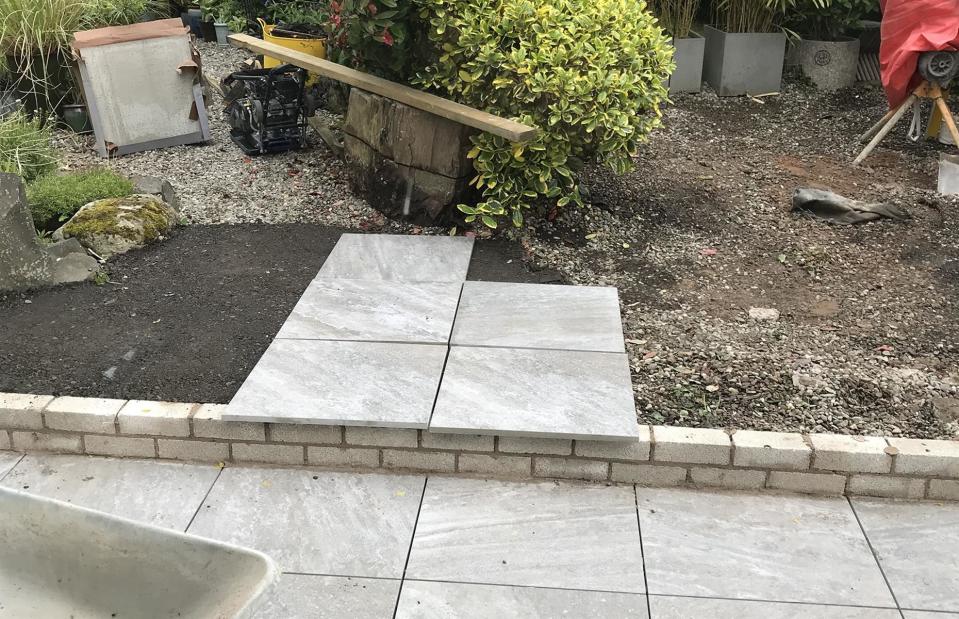
Bell Photography 423 / Shutterstock
The placement of your patio can be crucial because it will help define the shape of your garden. Going with the wrong dimensions in the wrong area can be a costly error and using the wrong materials could mean it won't last long.
It's vital to plan for hard landscaping that will stand the test of time. Initial questions to ask are: is the ground level? Is there adequate drainage? What will the maintenance be for my chosen material? Is there enough room to add garden furniture?
Neglecting drainage
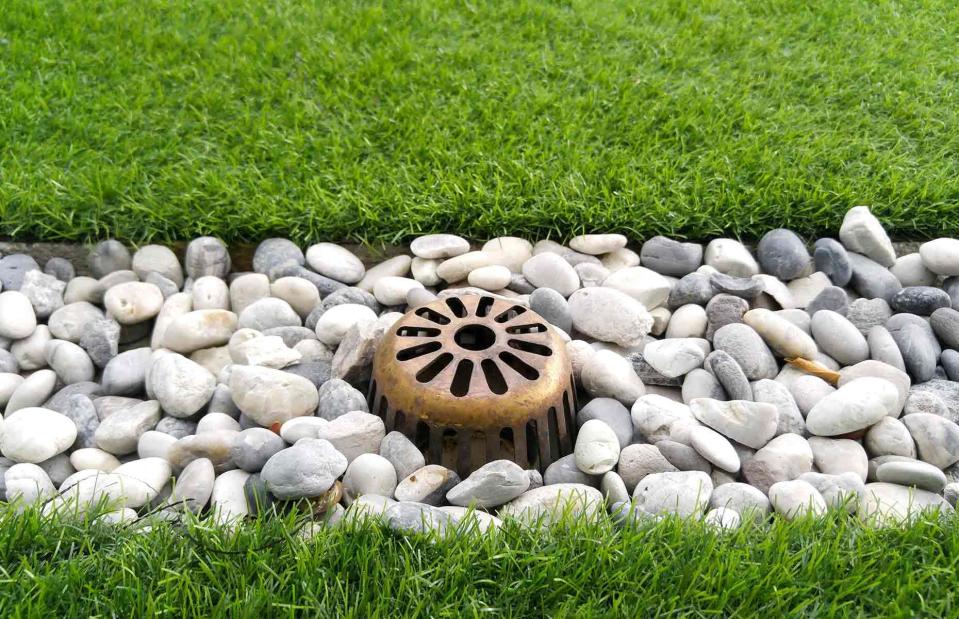
Kamol Jindamanee / Shutterstock
Without proper drainage solutions in place, that dream garden you spent so long perfecting will be reduced to a waterlogged mess. Ensure your design includes plenty of places for rainwater to escape, especially around solid landscaping like patios where water can pool. French drains, consisting of a gravel-filled trench, can be an aesthetically pleasing option if a metal grate feels unsightly.
It's also important to ensure your guttering and downpipes are properly connected to the drainage system. Otherwise, you may find excess water running off into your garden.
Covering existing drains
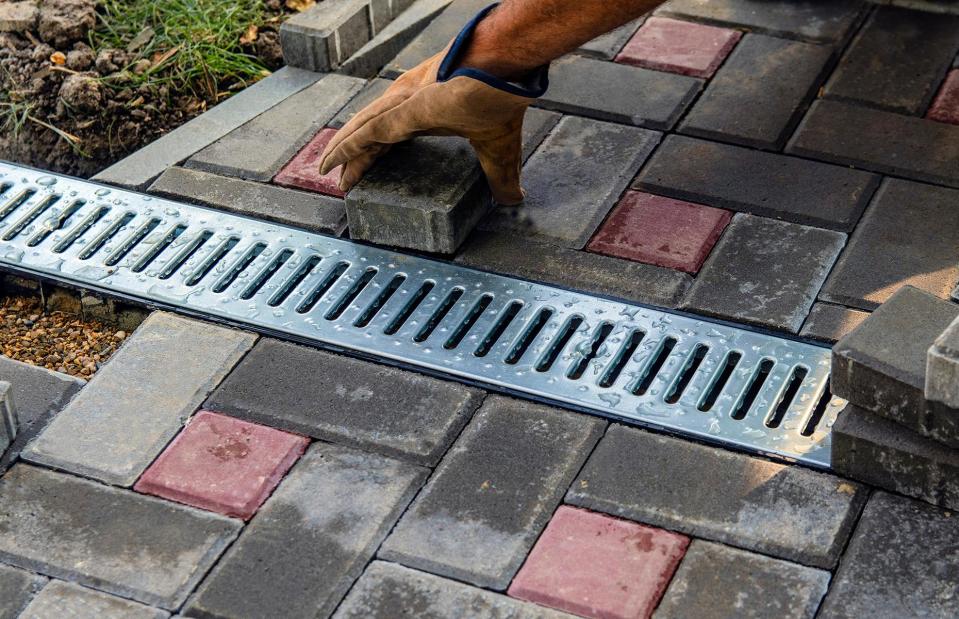
Alexey Krav / Shutterstock
While they may not be the most aesthetically pleasing part of the garden, grates provide crucial drainage for accumulated moisture and must remain uncovered to perform this job. Equally important are manhole covers and inspection chambers. According to Lanes Group plc, these must never be blocked or permanently covered as they play an important role in the health of not only your property's drainage system but that of your neighbours.
Look for recessed manhole covers that feature a removable inset tray that can be filled with concrete, tile paving or even fake grass, helping to disguise this necessary eyesore while ensuring the drain stays accessible.
Washing away a new patio
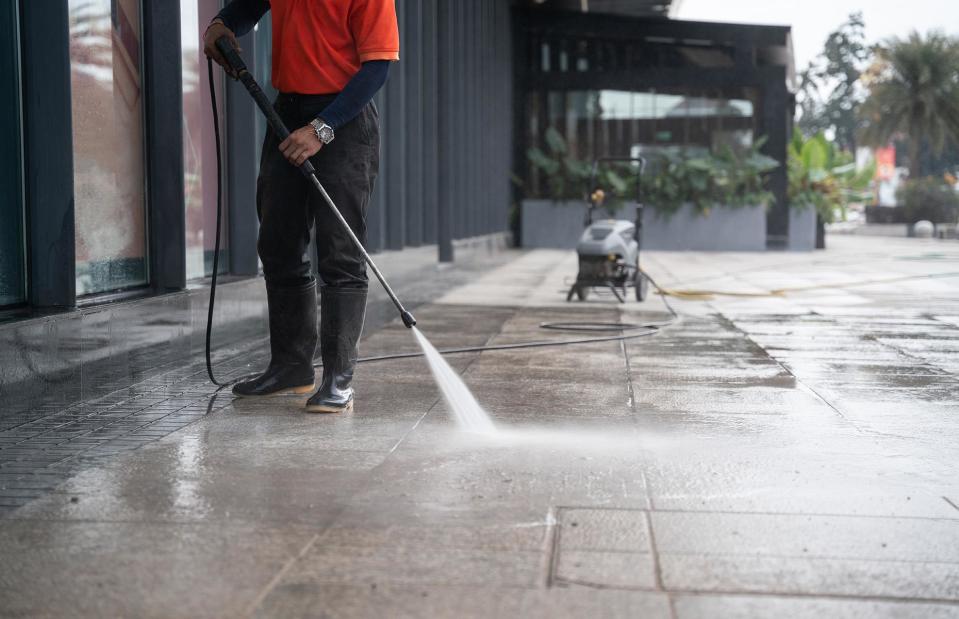
Tong_stocker / Shutterstock
Cleaning your patio with a pressure washer may seem like a quick and easy solution, but jetting your paving could make it deteriorate. Applied with too much pressure, the water will 'blow' any jointing sand or cement, which will then loosen your new, carefully laid tiles and cause damage.
Try not to overuse the jet washer and use a patio cleaner to help remove dirt instead. Use the machine on the lowest setting and keep the hose at an angle to soften the impact.
Overdoing the decking
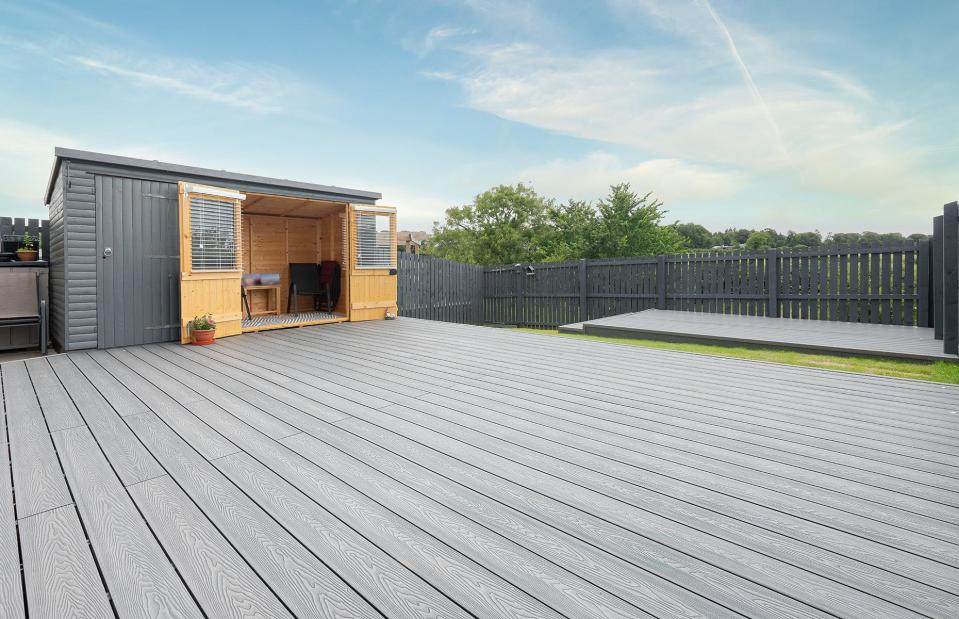
James McDowall / Shutterstock
Decked areas have been a popular terrace choice in gardens for decades, but their longevity is not often considered. Without yearly upkeep, including cleaning, stripping and repainting the boards with wood protection, the timber will rot and become dangerous.
Alternative materials made from composite plastic are built to last longer without high levels of maintenance. Alternatively, look-a-like porcelain decking tiles make an attractive alternative.
Not putting in a path
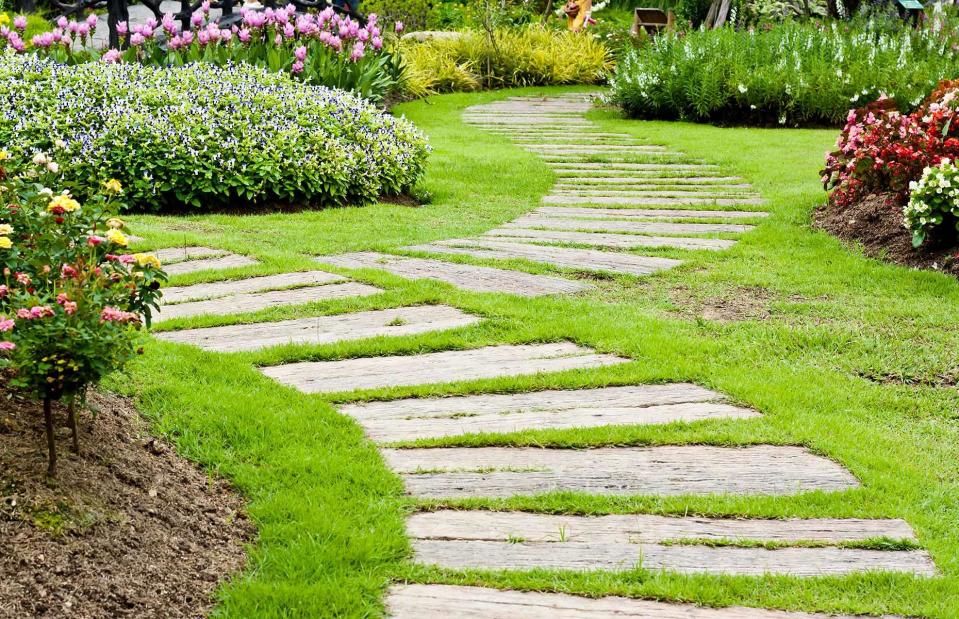
13SinghaStudio / Shutterstock
Endless downpours may be good for keeping the grass luscious and green, but it does mean churning up damp soil every time you need to head down the garden to put the bins out. It may mean sacrificing a little lawn space, but putting in a path will let you traverse your garden without trekking through all that muck that will inevitably end up in the house.
Paths can also be a fun way to add some creative flair to a garden – experiment with different styles and materials, ornamental tiles, lighting and floral borders for some extra colour.
Forgetting to protect your privacy
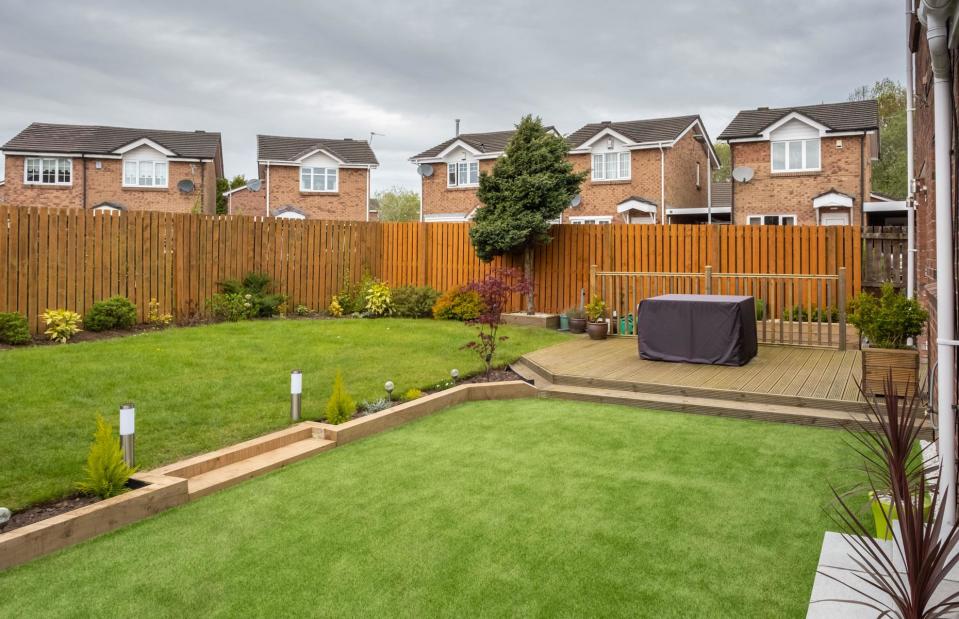
James McDowall / Shutterstock
One of the downfalls of living in a city or owning a new build is your garden can be exposed to nearby properties. Not prioritising privacy will result in a garden that's always on show to your neighbours. How will you relax and enjoy your new surroundings?
Trees can be a great natural barrier from prying eyes but beware of future root problems and be careful not to plant them too close to your property. Other privacy solutions include pergolas, which make attractive shelters, or simple sail canopies.
Next, you can start thinking about 'soft landscaping', which includes your green spaces i.e. plants, trees and lawns...
Planting trees that are too big
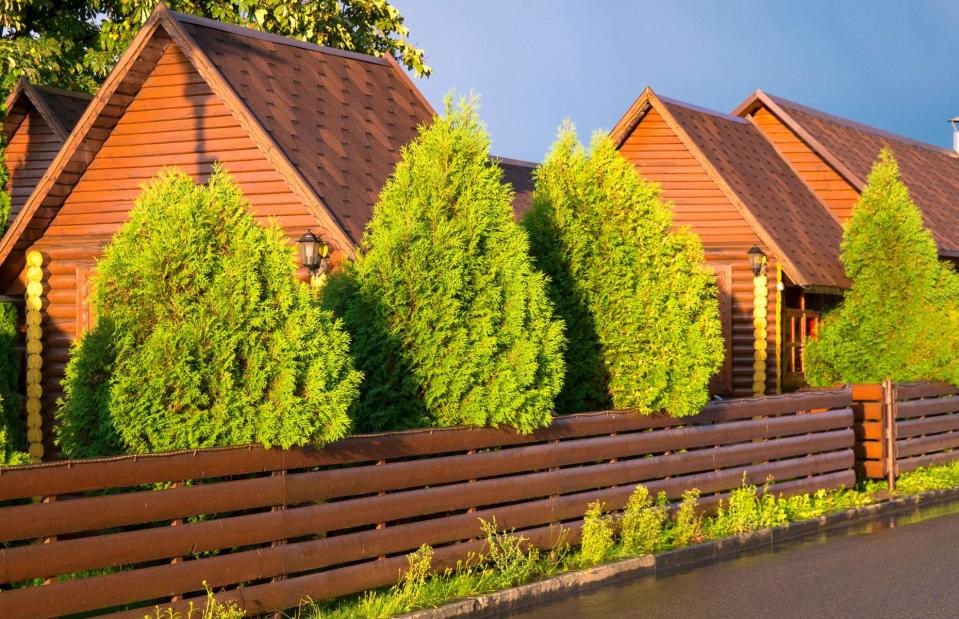
V.Lawrence / Shutterstock
Trees are a beautiful asset in gardens as they offer shade, privacy, colour and sometimes even fruit. But planting just any tree in your garden could be an expensive mistake. Consider the height and width that the mature tree will eventually grow to and be wary of root size; do not plant too close to your home or your neighbours' walls, or it could wreak havoc with foundations and even cause subsidence.
Not researching the soil
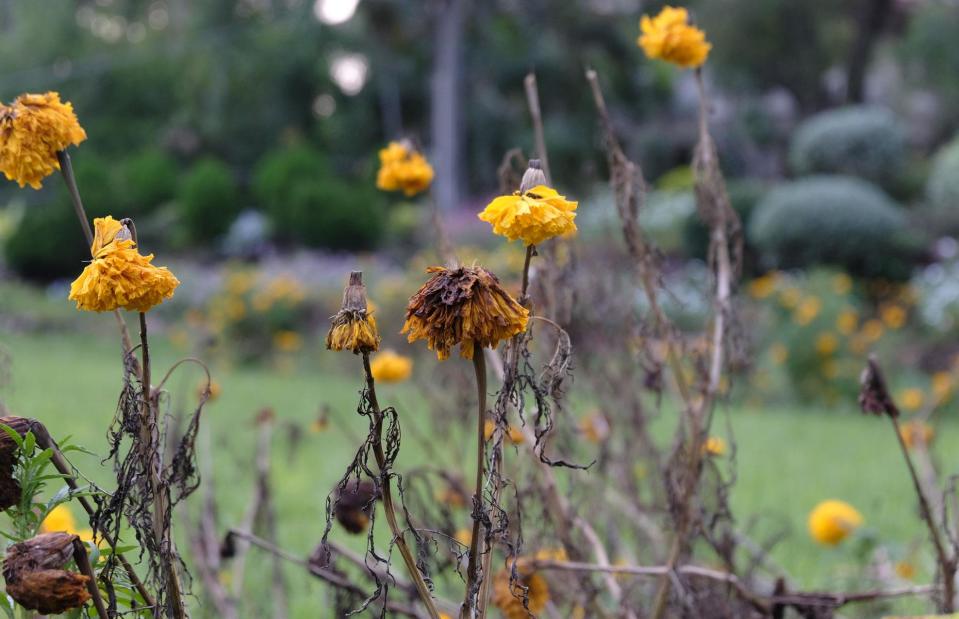
ontphoto / Shutterstock
Without considering the soil type and light levels in your garden, you can spend a fortune on unsuitable flowers, plants and shrubs. Different plants enjoy different environments so it pays to do your research before hitting the garden centre.
Alternatively, you could invest in a plant subscription to ensure you get shrubs suited to your outside space. Claire Ransom from plant subscription box site Lazy Flora says: "It's a great way to learn about plants at a manageable pace. It ensures you get chunks of information about a plant or plant collection, so you don't get overwhelmed."
Planting in the wrong places
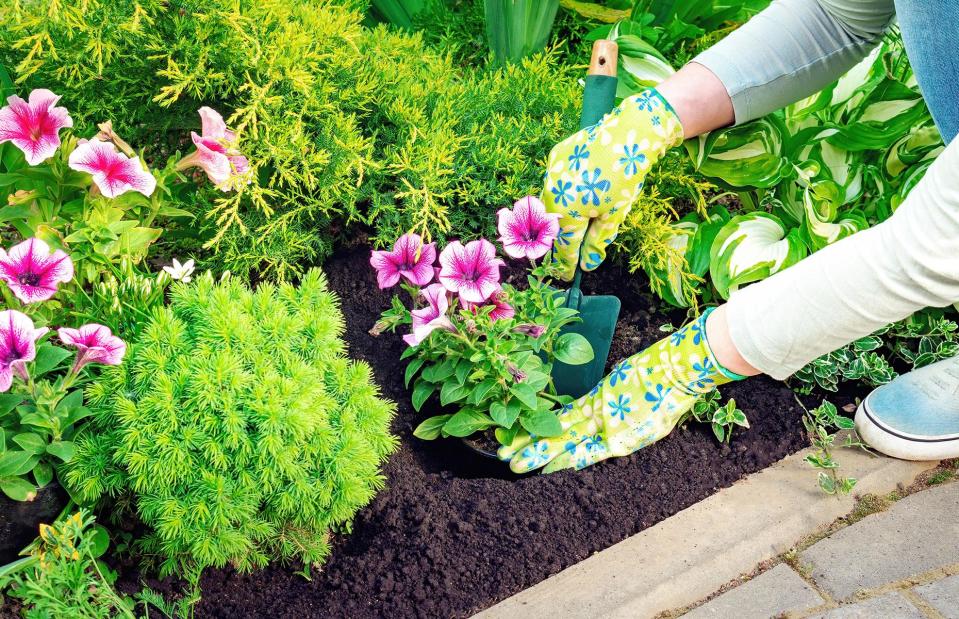
nieriss / Shutterstock
You might love those colourful hibiscus plants on your patio, but unless they're in a sun-soaked spot they won't last long. And likewise for shade-loving shrubs and bushes that will scorch unless sheltered. Read plant labels and descriptions before you buy foliage and take into consideration where the sun falls in your garden during the day before you plant.
Forgetting to factor in maintenance
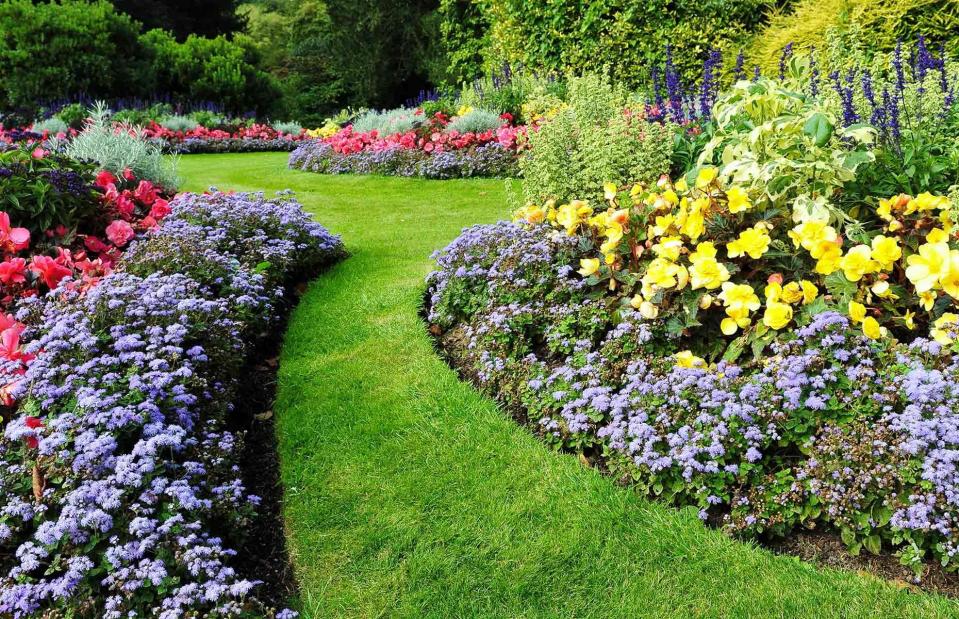
1000 Words / Shutterstock
Pristine flowerbeds, intricately carved topiary and manicured lawns may be beautiful to the eye, but if you don't have the time to maintain them, they'll soon spiral into an unruly nightmare. Ornate schemes like this need constant care and attention.
Unless you're prepared to regularly pay a professional gardener to upkeep your scheme, be realistic about how much time you can commit to your backyard. Low-maintenance alternatives like gravel and hardy evergreens can be just as impactful and may be a better fit for your lifestyle.
Underestimating edging
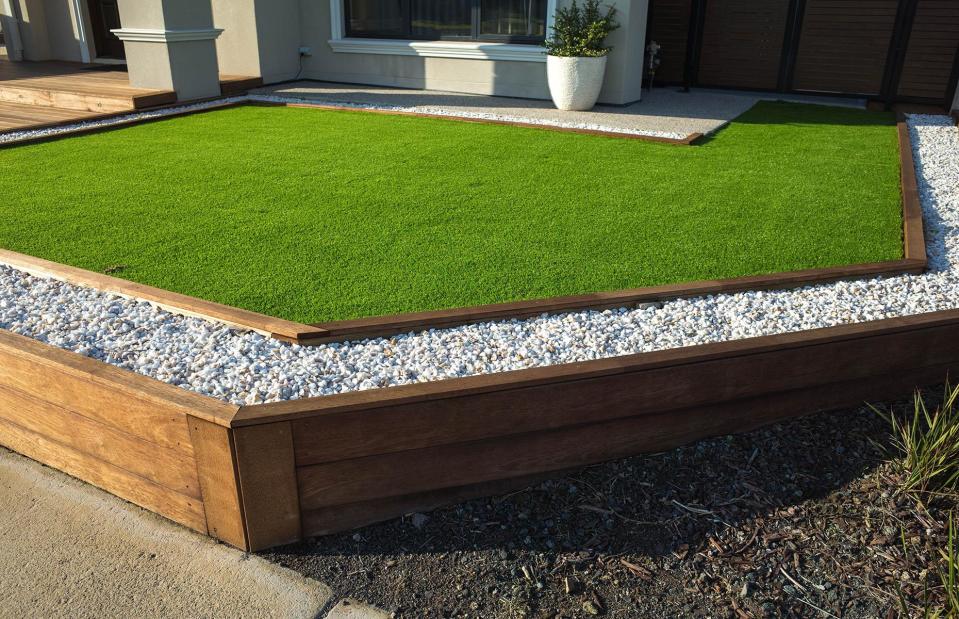
doublelee / Shutterstock
You've invested all that time and money digging out and planting a beautiful border but without an appropriate edging, it may look unfinished and untidy. It's a simple finishing touch that will neaten and elevate the outdoor space. Options can range from raised stone kerbs and wooden sleepers to budget-friendly metal or log-roll edging.
Buying plants you don't have time to water
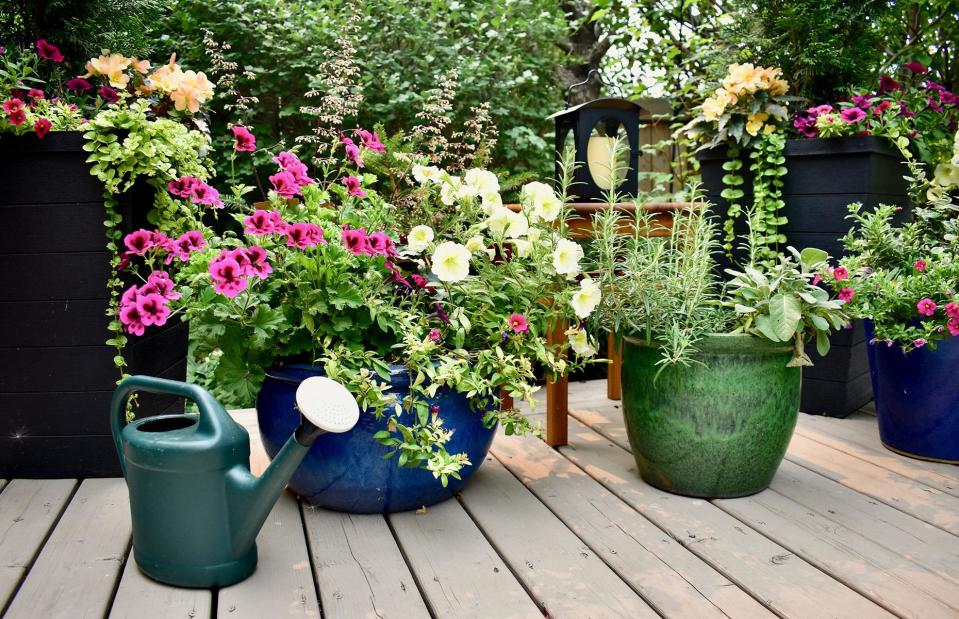
Klem Mitch / Shutterstock
If you've splashed out on plenty of pots and planters for your patio, don't assume rainwater will be enough to keep plants healthy and hydrated. Keep wilting to a minimum by allocating time to water your plants often; dry soil, dead leaf tips and slow growth are signs plants have not been replenished enough.
If you can't get out in the garden as often as you'd like, choose drought-tolerant species such as succulents and alpine varieties rather than thirsty plants like hydrangeas.
Neglecting your garden ecosystem
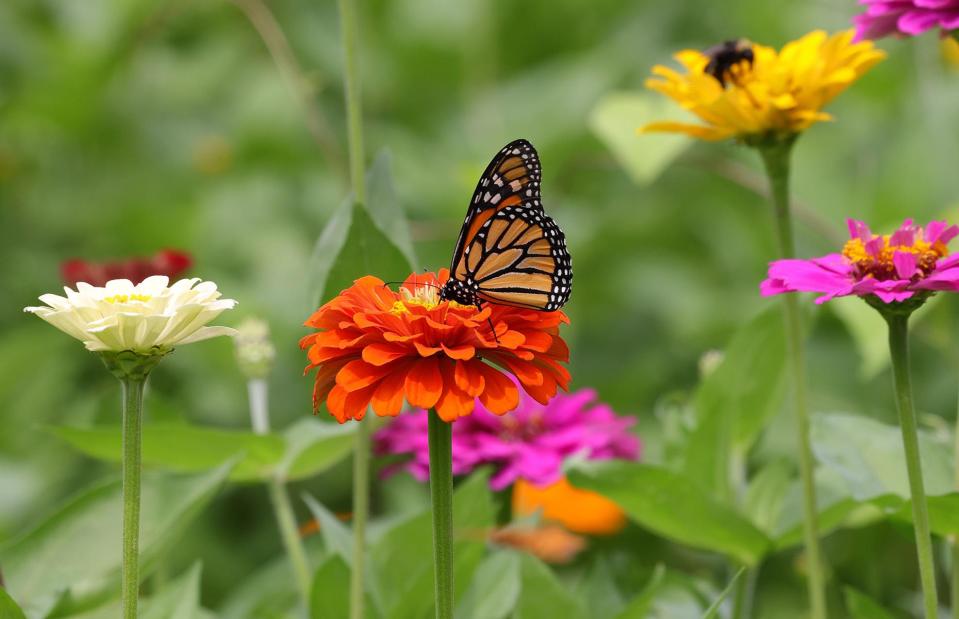
Anne Katherine Jones / Shutterstock
Failing to think about the minibeasts in your backyard means you could seriously miss out on making your garden thrive. Pollinators such as bees and butterflies will help a kitchen garden thrive and make flowers bloom.
Ladybirds will act as natural housekeepers by eating aphids and mites, while ground beetles will demolish leaf-munching snails and slugs. Plant plenty of insect-attracting flowers, build bug hotels and offer tiny watering holes with pebbles where they can rest.
Killing a new lawn
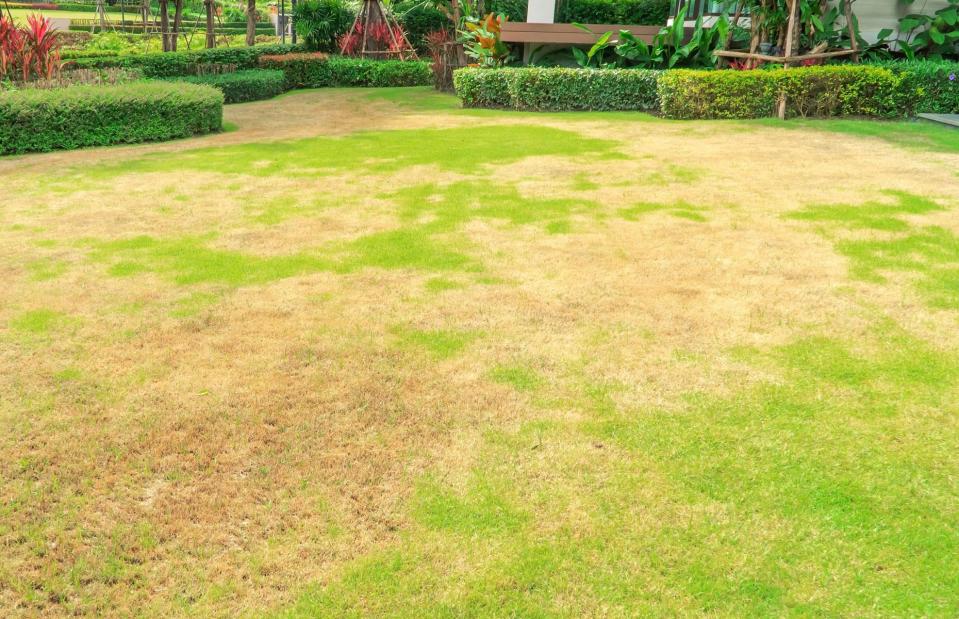
SingjaiStocker / Shutterstock
A gorgeous green lawn has long been the defining feature of a dazzling garden. But make no mistake, it requires a reasonable amount of maintenance to keep it looking its best. Time and effort need to go into the upkeep of grass or it can be scalped, scorched and invaded by weeds or garden pests in no time.
Whether you're growing from seed or laying new turf, the space needs to be watered regularly to avoid drying out and not walked on until it has rooted in. Once established, mow little and often – however, lawn care varies throughout the seasons so it's important to do your research.
Thinking artificial grass is indestructible
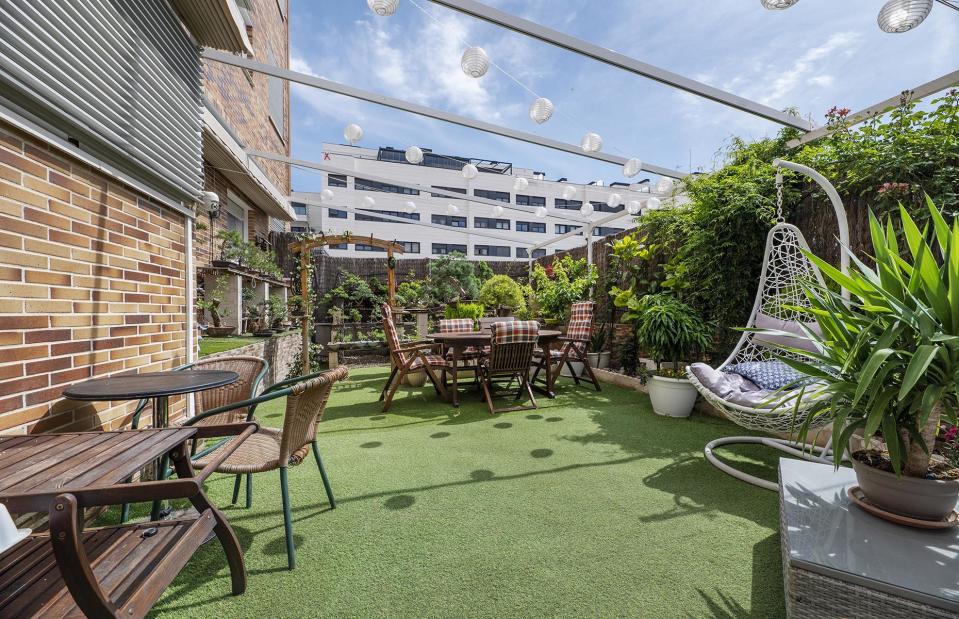
Toyakisphoto / Shutterstock
At the other end of the spectrum, astroturf is an easy-care option that won't need mowing, watering or weeding. But don't be misled into believing it's invincible. Avoid cigarettes and BBQs near artificial grass – while most products should have a safety standard and be fire-resistant, that doesn't mean fibres won't melt if they come into contact with hot ash and coals.
Additionally, chewing gum, adhesives, oil and crayons left in the sun can all cause damage that will be costly to repair.
Once the hard work is done, you can have fun adding in the finer details that will bring your garden to life...
Taking a theme too far
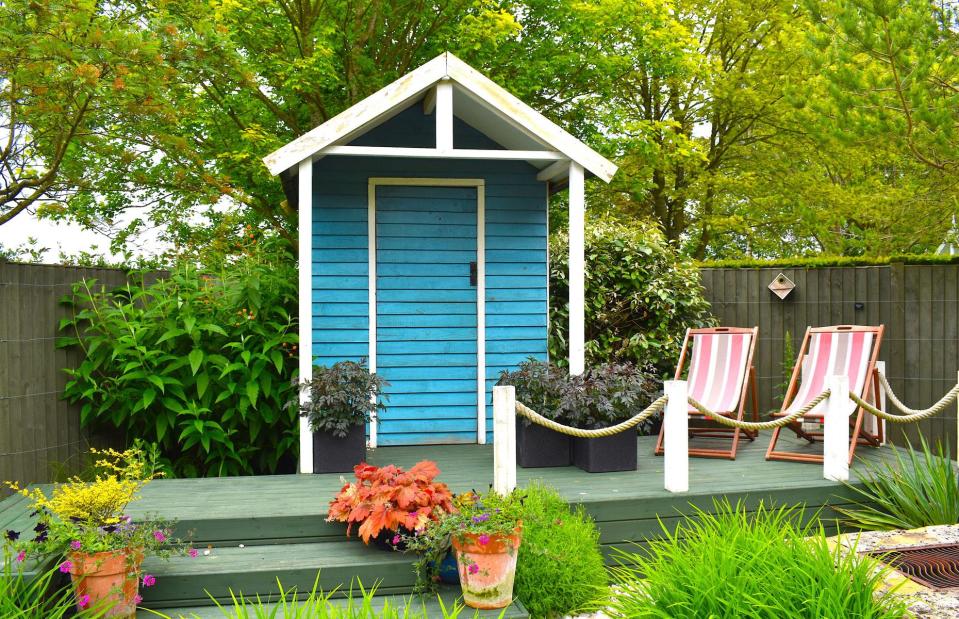
Rusana Krasteva / Shutterstock
Transforming your garden into a coastal retreat complete with a beach hut or a jungle oasis might seem like a good idea at the time but some trends aren't as timeless as others. Gardens can take years to establish so settle for a look with longevity that will last and get better with age.
If your heart is set on a particular look, introduce it with accessories such as cushions, tableware and potted plants that can be switched up next season if your mood changes.
Garden feature fails
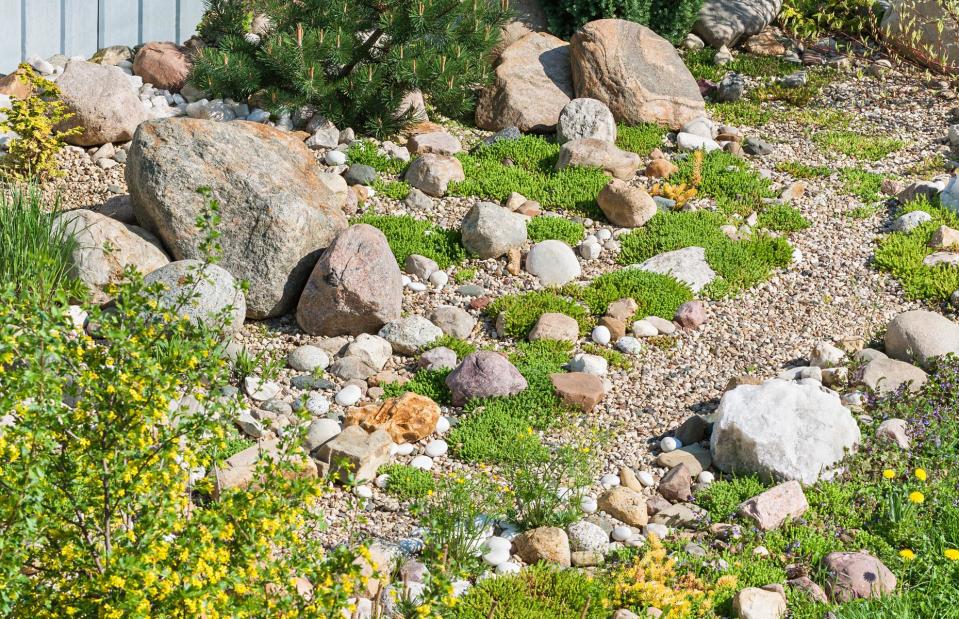
yanikap / Shutterstock
From grand sculptures to inexpensive terracotta pots, decorative garden features can add personality and style but chosen carelessly they can make your outside space look messy. A rockery, for instance, can look more like a pile of rubble if not placed on the right terrain and at the right levels.
Make sure your ornaments suit your garden style and size – position them as focal points on a terrace or place within foliage to add interest to your flowerbeds.
Not working out a water feature
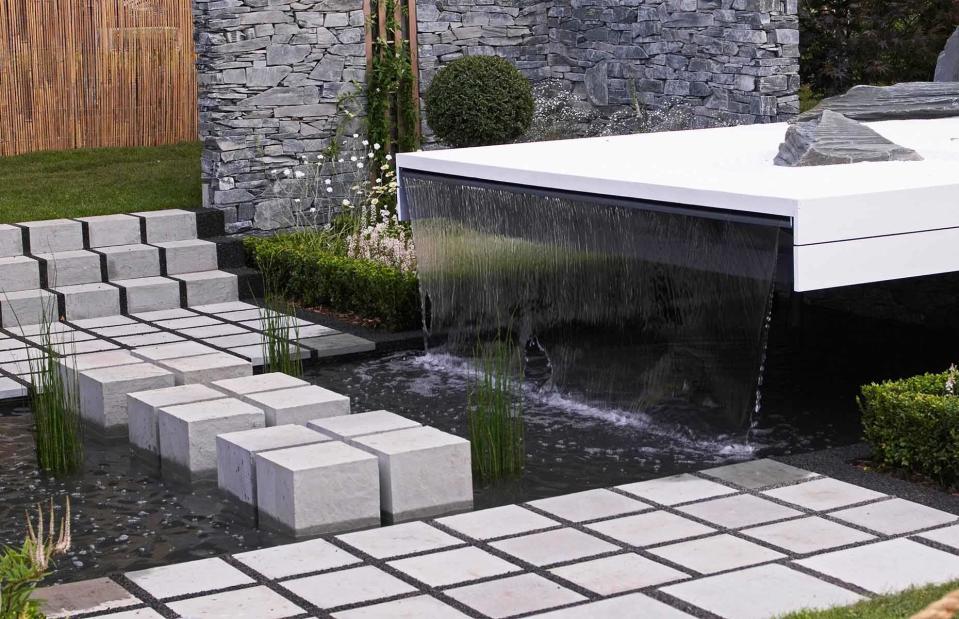
Gardens by Design / Shutterstock
A water feature may be a wonderful asset to a garden but if it's not installed correctly or is out of proportion with the rest of your space, it can become a dangerous eyesore. Without a natural filter system, a neglected pond will soon turn murky and impure, which can endanger fish and wildlife.
Unless it has a specialist design, you'll need a filter installed to keep the water fresh. In terms of placement, choose a safe location that's out of the way of main thoroughfares and pathways, and ensure it's fenced off if you have young children.
Blinding a look with lights
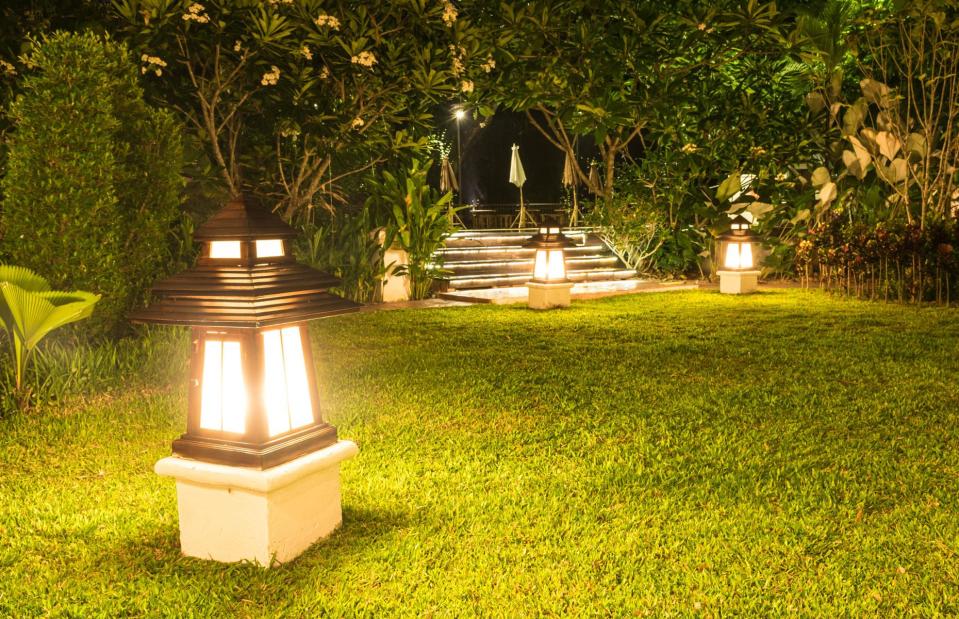
Chokchai Noppawong / Shutterstock
Get your garden lighting setup wrong and you could end up with blinding illumination that blasts away any evening ambience. Alternatively, the absence of outdoor lights will likely put you off enjoying your outdoor area once the sun goes down.
The right garden lighting can turn your garden into an atmospheric outside space: festoon lights strung up on a tree look vintage and chic, solar-powered up-lighters will highlight beautiful flowerbeds, while integrated spotlights look modern and minimalist.
Forking out on inappropriate furniture
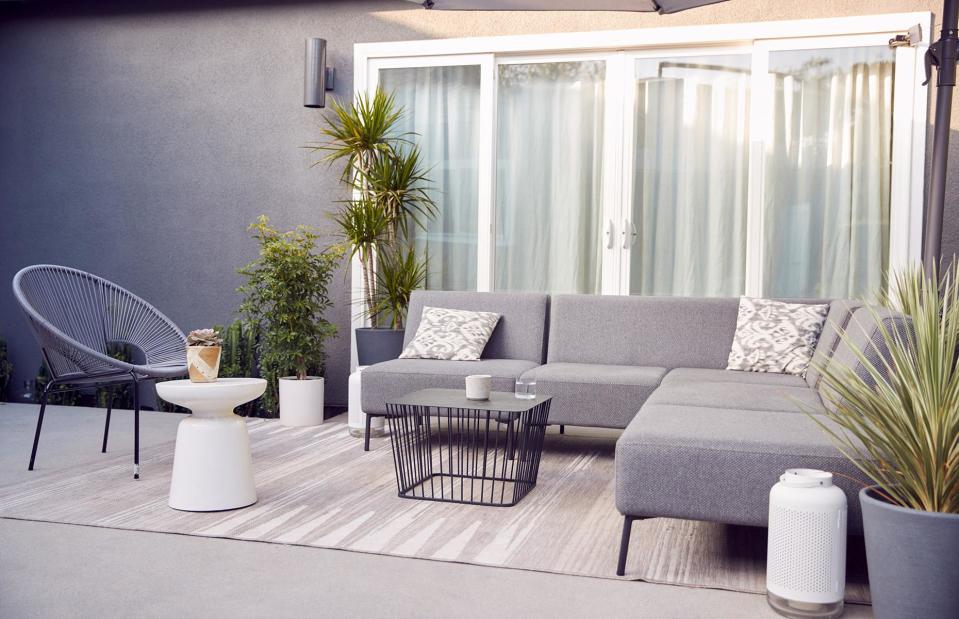
Monkey Business Images / Shutterstock
A huge garden sofa or day bed may seem luxurious and comfortable but unless you have space, these indulgent purchases could end up being a waste of money. Aim to clear at least three feet of patio flooring around the furniture, otherwise the terrace will look cluttered and impractical.
You should also think about how you'll protect your furniture during autumn and winter as snow and rain can wreak havoc on materials like natural rattan and metal. If you don't have a shed or garage big enough to relocate your pieces, investing in a suitable cover will be a must.
Neglecting outdoor woodwork
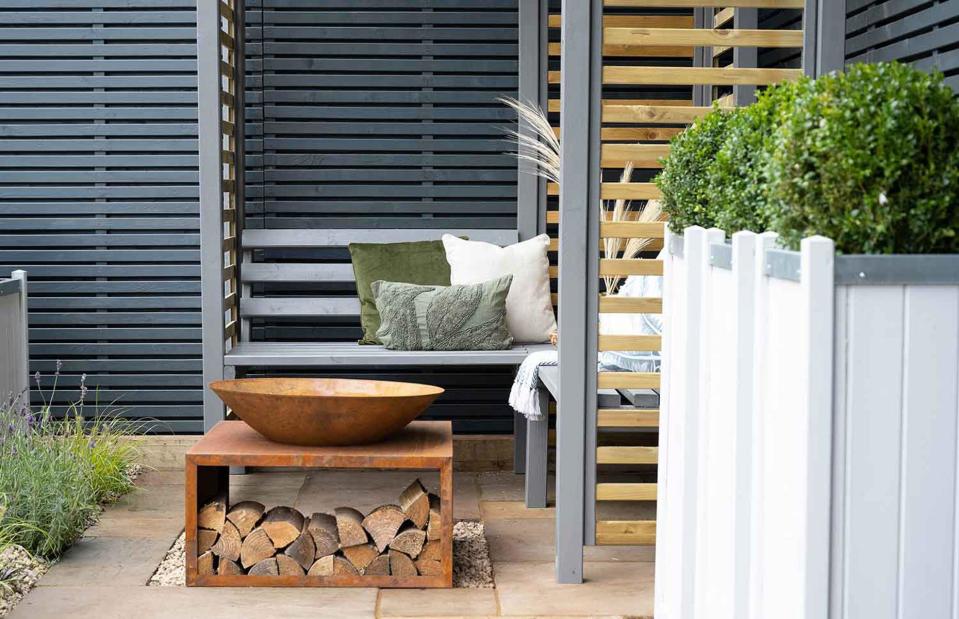
Thorndown Paints
As with timber decking, wooden furniture, sheds and fencing will look attractive at first but it will soon decay if it's not properly protected and cared for. Wood stains and protective paint come in a range of beautiful colours for traditional and modern garden schemes, so it's easy to create a vibrant oasis while caring for your outdoor woodwork.
Wasting water
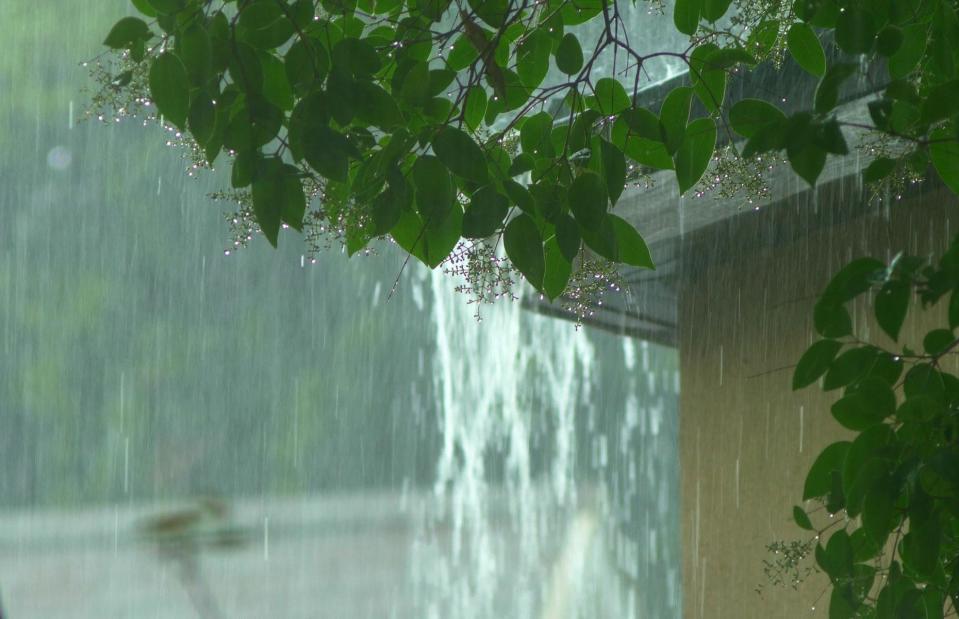
Kopytin Georgy / Shutterstock
A well-established garden needs plenty of water to thrive and with nearly every home now fitted with a water metre, it makes sense to save and reuse rainwater wherever possible to improve your bank balance and the environment. Install a water butt near your external drainpipe to collect rainfall and utilise the runoff before unrolling the hose.
Going without garden storage
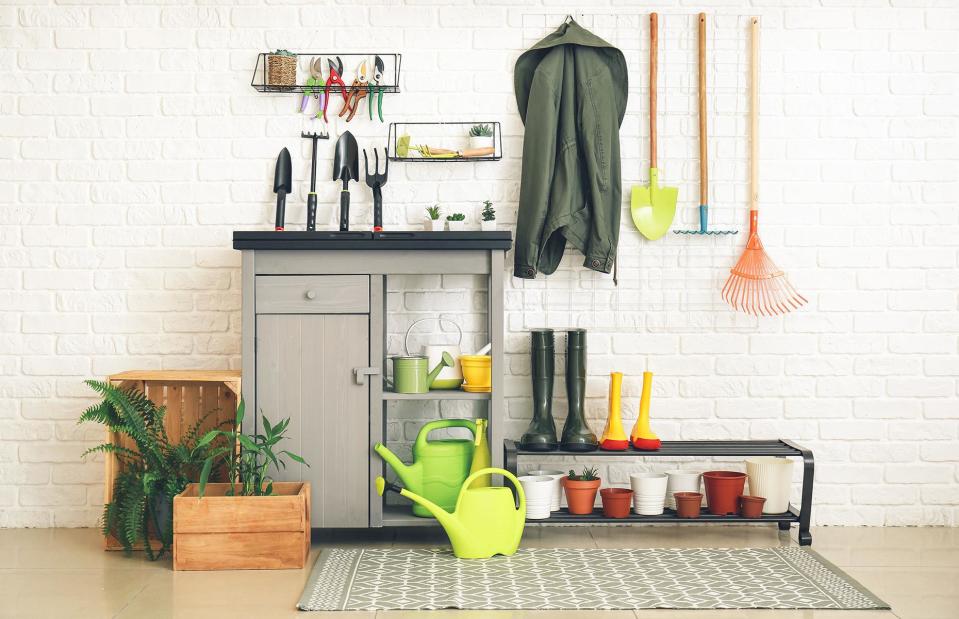
Pedal to the Stock / Shutterstock
Failing to factor in an attractive storage solution for your garden tools and equipment will leave your outdoor space a cluttered mess in no time. Whether it's a shed or a corner of the garage, allocate an organised spot for storing tools, logs, seasonal furniture and recycling bins to keep your outdoor oasis attractive and uncluttered.
Taking on too much
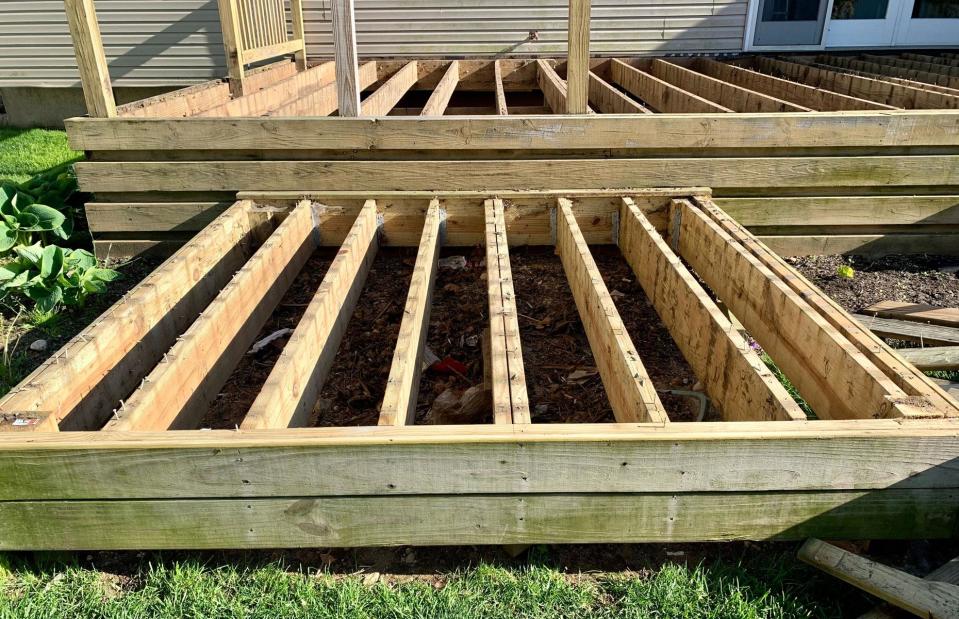
Jaclyn Vernace / Shutterstock
Redesigning your garden is an exciting prospect but taking on too much and over-complicating the design can soon make your enthusiasm fade. If you're looking to tackle the project yourself, know your limits and plan accordingly, otherwise enlist a contractor who has the knowledge and expertise to help you fulfil your wildest backyard dreams.


